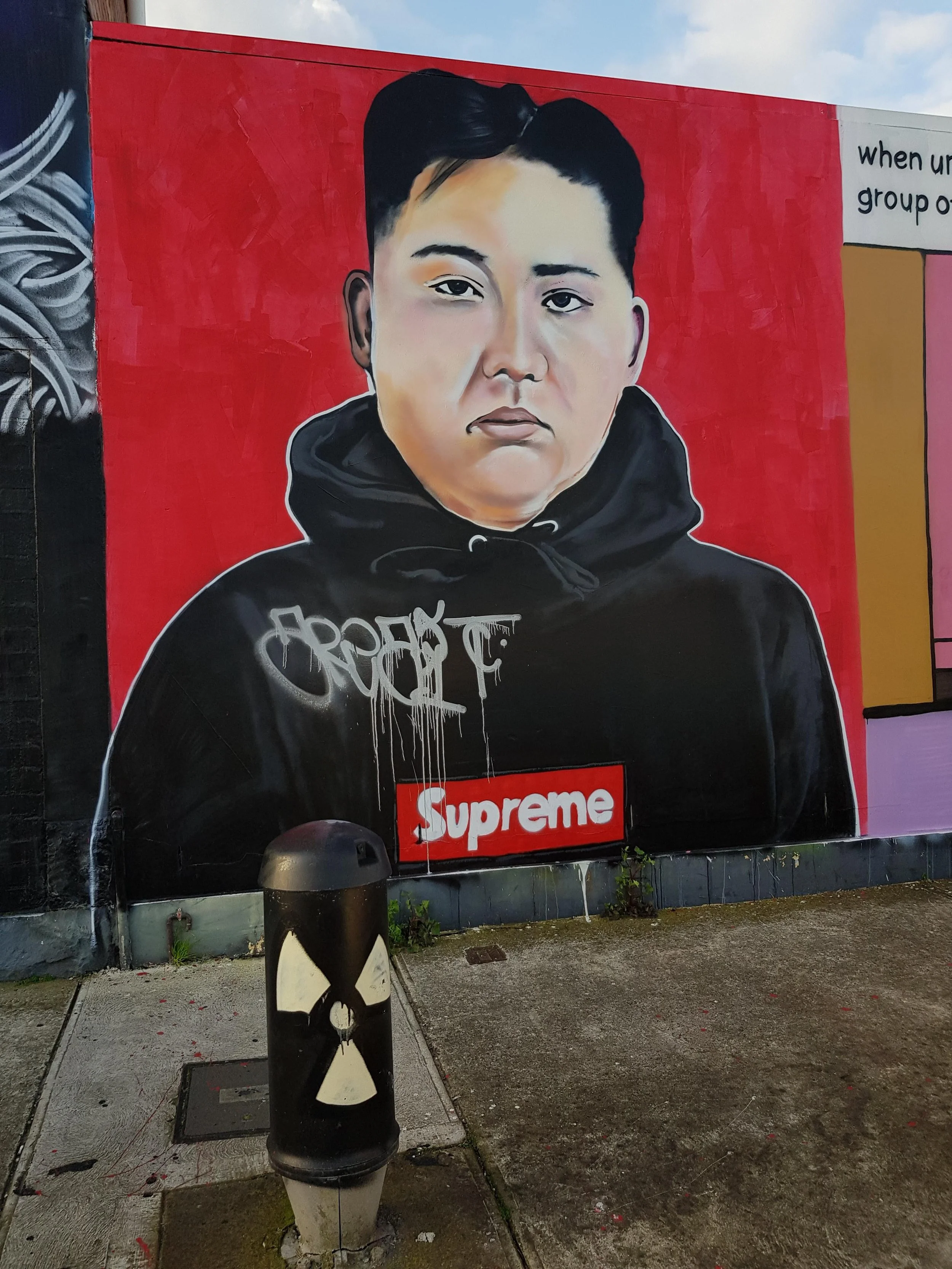From Vandalism to Vogue: How Graffiti Took Over the Art World
Graffiti the art form that was born on the gritty streets, whispered in dark alleyways, and screamed on city walls – has come a long way. What started as a rebellious act of self-expression is now gracing the walls of high-end galleries and fetching millions at auctions. But how did graffiti, once scorned as vandalism, become one of the most talked-about and celebrated movements in the art world? Let’s take a colorful dive into its vibrant evolution.
September 18th .Written by Ryan PackerGraffiti’s Wild Beginnings
Imagine New York City in the 1970s – chaotic, electric, and bursting with creativity. The walls of the city were no exception. Here, graffiti was born out of necessity, a way for young people to make themselves seen and heard in a world that often ignored them. With spray cans in hand, these urban artists transformed crumbling buildings, subway trains, and street corners into open-air galleries.
Graffiti wasn’t just art – it was rebellion. It was a middle finger to the system, a way of saying, “I exist, and you can’t erase me.” Early graffiti artists like Jean-Michel Basquiat and Keith Haring were part of this revolution. Basquiat’s cryptic, chaotic pieces and Haring’s bold, cartoonish characters started popping up in unexpected places, turning heads and forcing the world to see graffiti as more than just mindless scribbles.
Haring, in particular, was a pioneer. His instantly recognizable figures – dancing, moving, and celebrating life – transformed subway stations into lively canvases. Haring’s graffiti wasn’t just for the streets, though. It carried deep social messages, like his bold stances on AIDS awareness and LGBTQ+ rights. His art was accessible, joyful, and revolutionary.
From the Streets to the Spotlight
By the 1980s, the art world couldn’t ignore graffiti any longer. What was once seen as defacement of public property was suddenly being hailed as a powerful art form. The shift wasn’t without controversy. Graffiti, by its very nature, was meant to be raw, unfiltered, and untamed. But suddenly, it was being showcased in pristine galleries, bought by collectors, and even auctioned off for jaw-dropping sums.
One of the most famous artists to bridge this gap between street and gallery was Banksy, the elusive British street artist whose work often appears overnight in cities around the world. Banksy’s satirical, often politically charged pieces have made him a global phenomenon. His artwork, while still rooted in the streets, now commands millions at auctions. In one unforgettable moment, his painting "Girl With Balloon" shredded itself right after being sold for $1.4 million, in a brilliant stunt that reminded everyone of graffiti’s rebellious roots.
Graffiti and the Rise of Urban Culture
While graffiti was busy breaking into the art world, it was also leaving its mark on urban culture in a big way. It became the visual language of hip-hop, a movement that was all about self-expression, authenticity, and defiance. Graffiti artists, much like breakdancers and rappers, used their craft to speak to the streets, reflecting the struggles, dreams, and energy of the youth.
Graffiti’s influence on fashion was inevitable. Look no further than streetwear brands like Supreme and Off-White, which have embraced graffiti’s bold, unapologetic style. Today, graffiti-inspired fashion is everywhere, from high-end runway shows to casual urban wear. It’s a testament to how deeply this once-rogue art form has embedded itself in the fabric of modern culture.
A Global Canvas: Graffiti Around the World
Graffiti’s influence didn’t stop in New York – it’s now a global phenomenon. From the dizzying heights of Brazil’s pixação style, with its towering, cryptic messages, to the politically charged walls of Berlin, graffiti has become a worldwide language. Cities like Melbourne and Lisbon have embraced street art to the point where graffiti tours are now a must-do activity for visitors.
In some places, graffiti has become a respected public art form, with artists being commissioned to create murals that celebrate local culture. What was once considered an eyesore has become a vibrant and integral part of a city’s identity. Shepard Fairey, for example, has used graffiti to make powerful political statements, with his iconic "Obey" campaign and the famous Barack Obama "Hope" poster cementing his place in both political and artistic history.
Graffiti: From Rebellion to Revolution
At its core, graffiti is about more than just bold colors and wild lines. It’s about using the walls of a city to tell a story, to express frustration, joy, love, and anger. It’s a raw and unfiltered snapshot of the human experience, painted in neon and spray can fumes. Graffiti artists around the world continue to push boundaries, using their art to speak out against injustices, highlight social issues, and inspire change.
From the Black Lives Matter murals that spread across cities in 2020 to the graffiti that appeared during the Arab Spring, graffiti remains one of the most powerful forms of protest art. These pieces speak volumes in ways that words sometimes can’t.
Graffiti’s Artistic Glow-Up
What began as a form of rebellion has now become a respected art form, gracing the walls of galleries and museums. And yet, graffiti never forgets its roots. It’s a reminder that art doesn’t have to be confined to four walls or a pristine canvas – sometimes, the best art is found in the places we least expect it.
Graffiti isn’t just about making a mark on a wall. It’s about making a mark on the world. And in a world that’s always changing, that rebellious streak will keep graffiti alive – from the streets to the spotlight, and everywhere in between.






